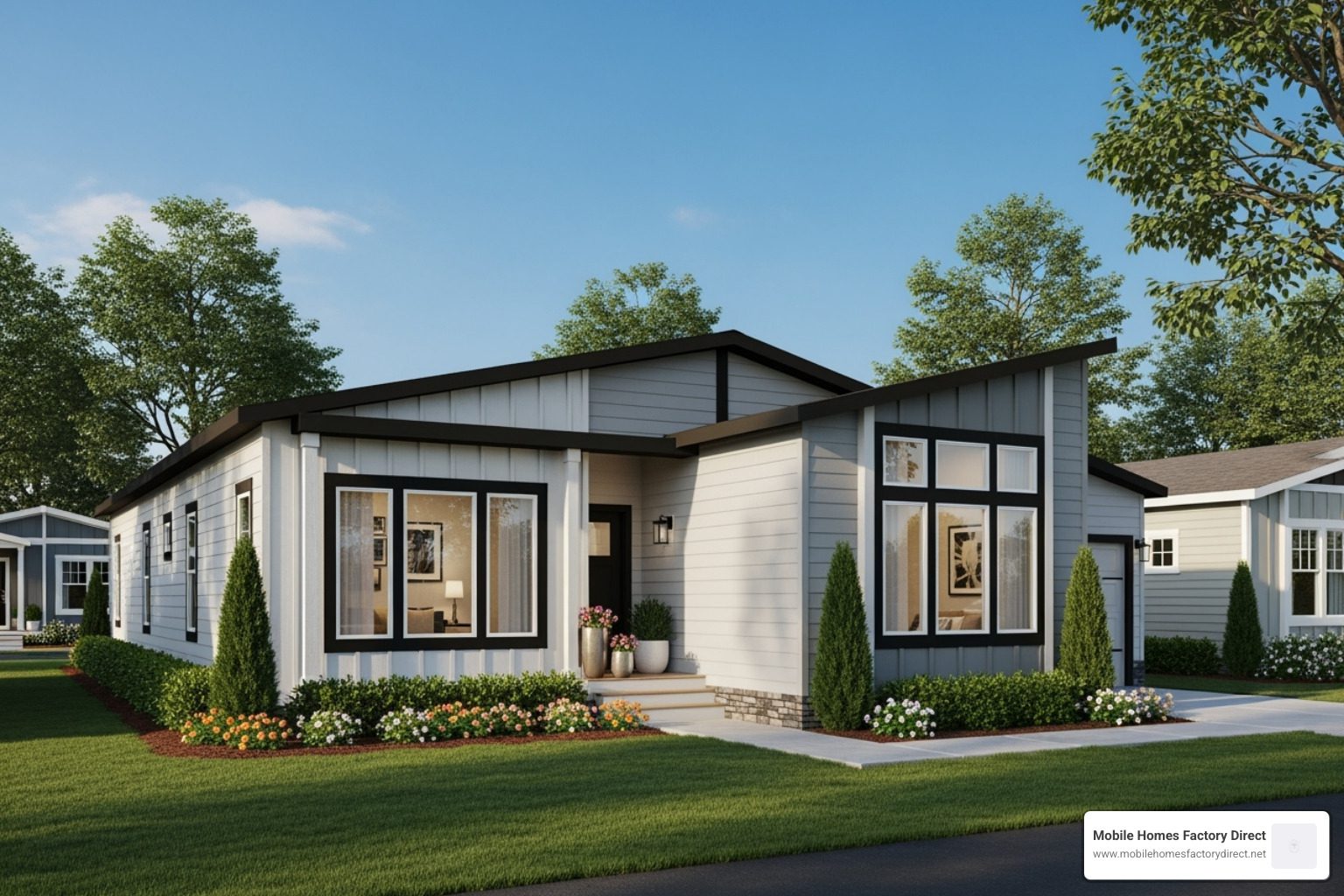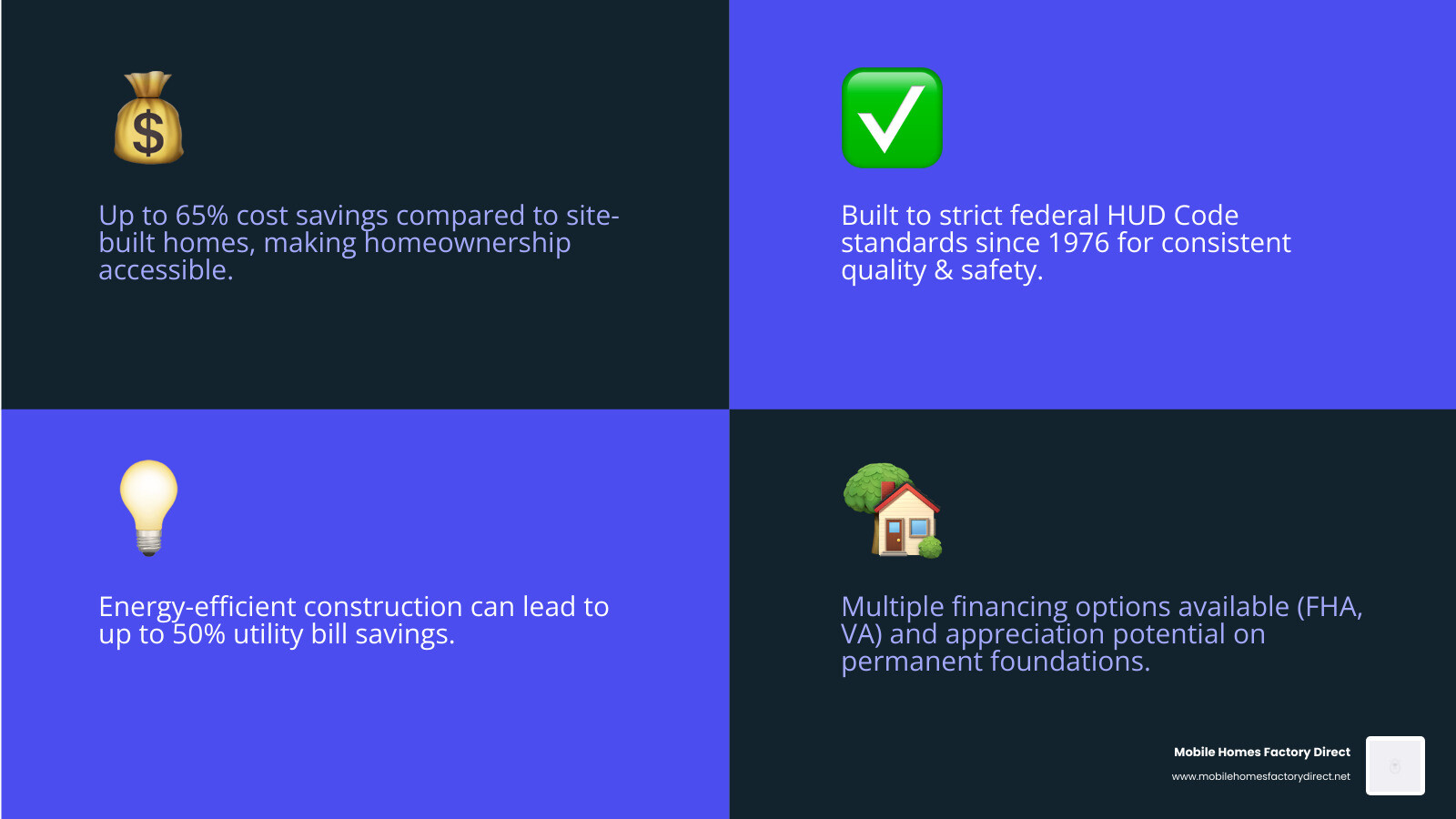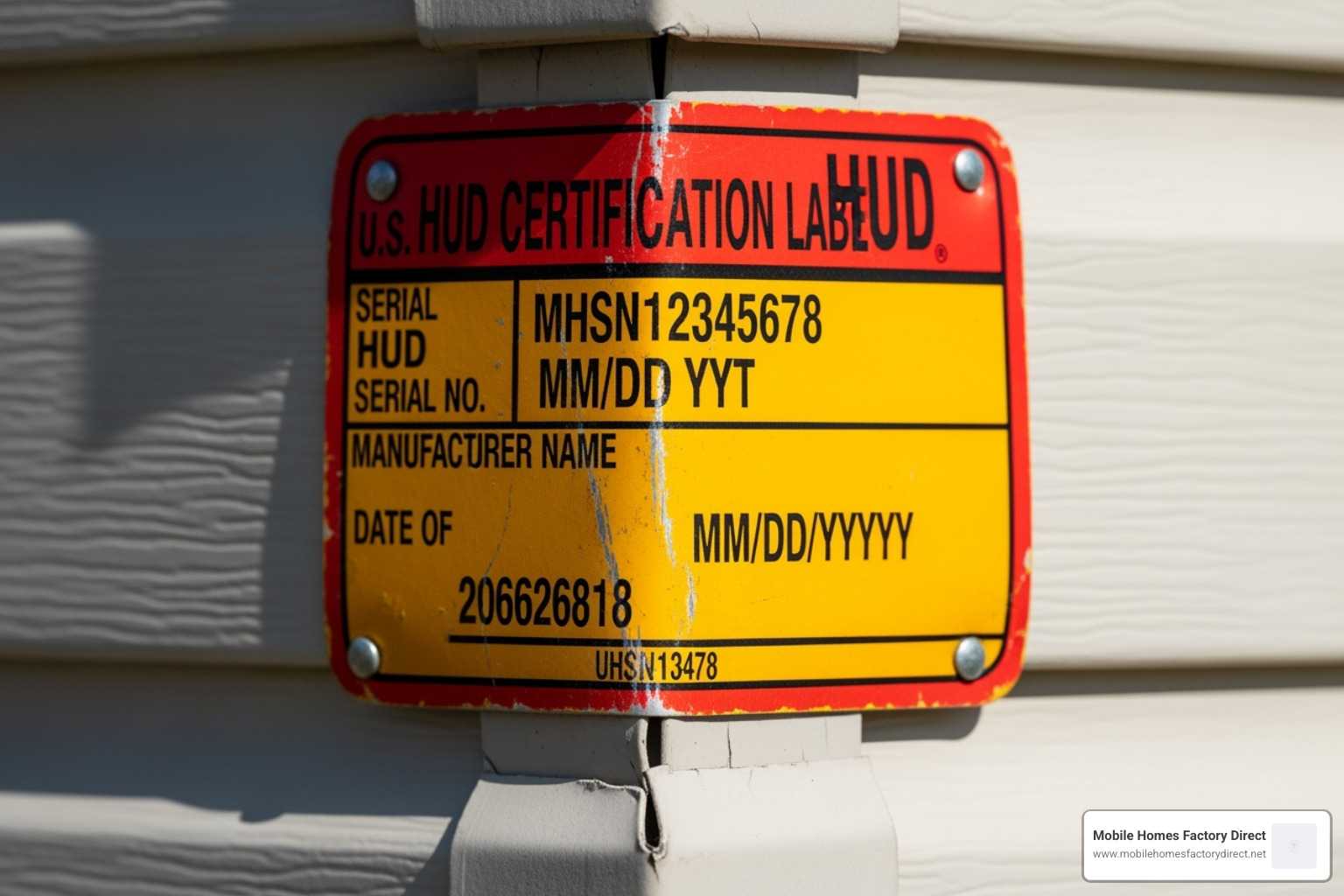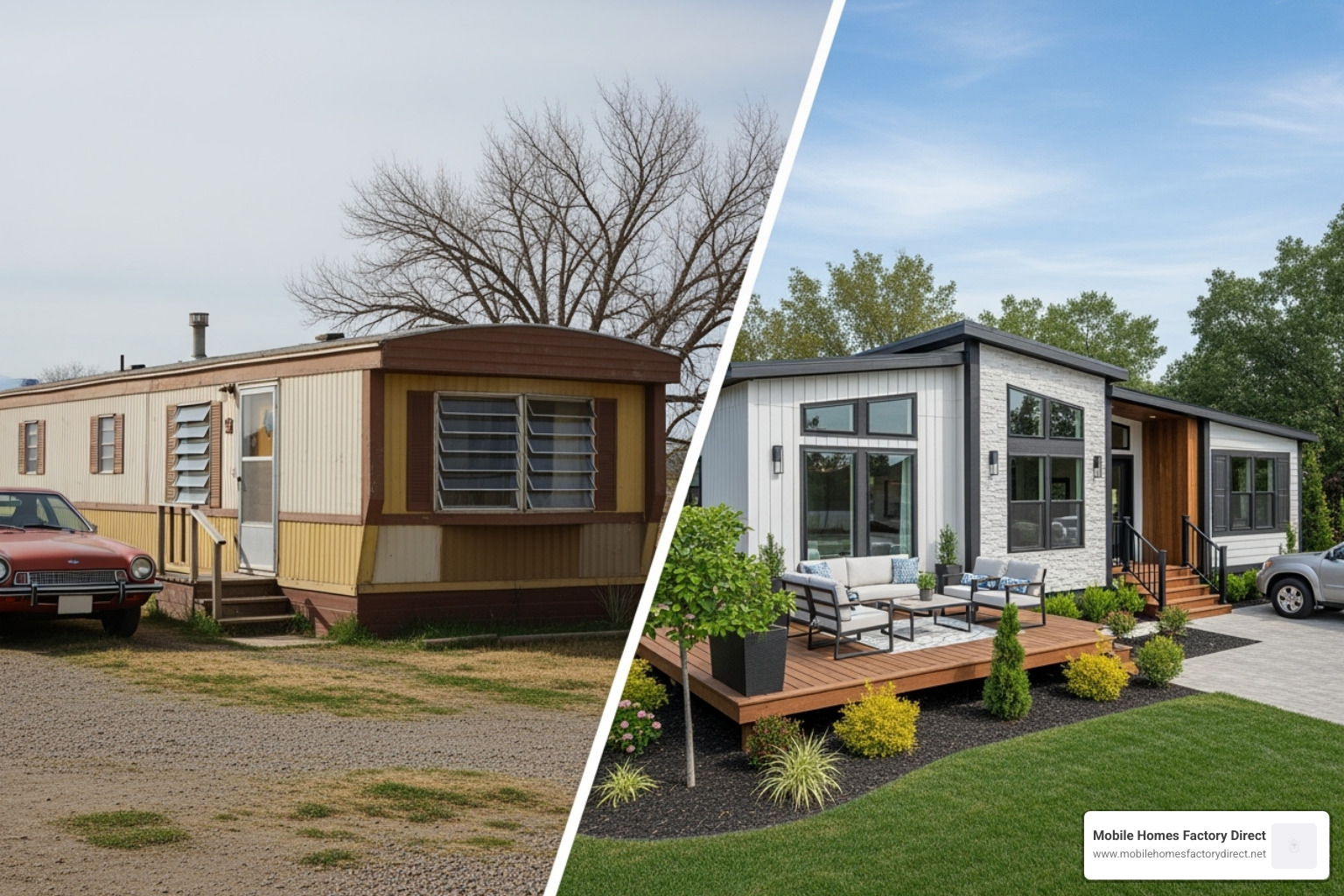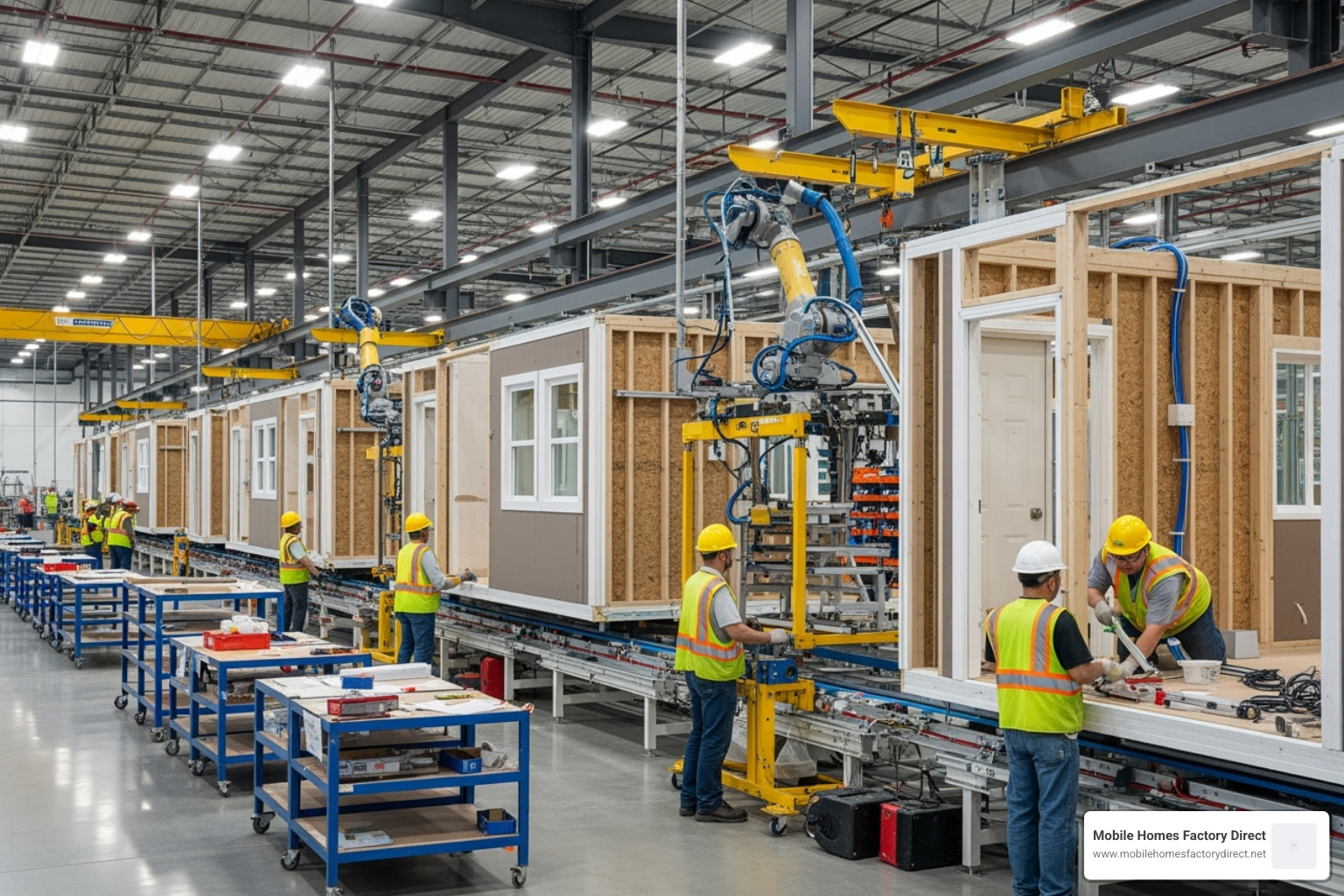The Manufactured Housing Maze: Your Guide to Regulations and Resources
Navigate the manufactured housing maze! Discover quality, HUD regulations, financing options, and expert resources to find your perfect home.
Why Manufactured Housing Matters for Today’s Homebuyers
Manufactured housing is a practical solution to the affordable housing crisis. These factory-built homes offer quality construction at a fraction of the cost of site-built homes, making homeownership accessible to millions.
What is manufactured housing?
- Factory-built homes constructed to federal HUD Code standards
- Built on permanent chassis for transportability
- Cost significantly less than site-built homes (often 1/3 the price)
- Can appreciate in value when placed on permanent foundations
- Eligible for various financing options including FHA, VA, and conventional loans
While the average site-built home costs $409,872, manufactured homes average just $124,300. This cost difference comes from factory efficiency, where homes are built in controlled environments with consistent quality and economies of scale.
Modern manufactured homes are not the “mobile homes” of the past. Since 1976, they have been built to strict federal standards regulating everything from structural integrity to fire safety. Today’s models can be indistinguishable from site-built homes and are often more energy-efficient.
For families facing credit challenges or tight budgets, manufactured housing offers a realistic path to homeownership. The industry provides flexible financing and streamlined purchasing, while federal regulations ensure quality and consumer protection.
However, navigating the manufactured housing market can be complex. Buyers face decisions about HUD codes, foundations, and financing that impact long-term value, all while dealing with outdated stereotypes and varying state regulations.
What is a Manufactured Home? Clearing Up the Confusion
The terms “mobile home,” “manufactured home,” and “modular home” are often used interchangeably, but they are quite different. Understanding these distinctions is key to making the right choice for your family.
A manufactured home is built in a factory under strict federal oversight from the U.S. Department of Housing and Urban Development (HUD). Every aspect is inspected to meet federal standards before it leaves the factory.
The key identifier is the red certification label on the exterior, signifying the home meets federal quality standards. No other housing type has this level of federal oversight.
Manufactured vs. Modular vs. Site-Built Homes
While they can look identical once set up, these home types follow different rules and regulations.
Manufactured housing follows the national HUD Code. These homes are built on a permanent steel chassis that allows them to be transported to your property.
Modular homes are also factory-built but follow local building codes, the same as site-built homes. They are transported on flatbed trucks, and the transportation equipment is removed on-site.
Site-built homes are the traditional route—built piece by piece on your land using local building codes and inspectors.
Financing also differs. Manufactured homes can be financed as personal property (chattel loans) or as real estate if on a permanent foundation. Modular and site-built homes typically qualify for conventional mortgages.
When it comes to value, all three can appreciate, but manufactured homes on permanent foundations tend to perform best.
The Official Definition of Manufactured Housing
Officially, HUD defines a manufactured home as being at least 320 square feet and built on a permanent chassis. While this allows for transport, most homes are never relocated after installation.
The federal building code ensures consistency, safety, and durability nationwide, giving you confidence in your home’s quality regardless of where it was built. This federal oversight means your home will be safe, durable, and energy-efficient.
For complete technical details, you can dive into HUD’s official documentation at About Manufactured Homes – HUD. The bottom line is that manufactured housing is a smart, regulated way to achieve quality homeownership at an affordable price.
The Evolution of Quality and Value
The manufactured housing industry has transformed remarkably. If you haven’t looked at these homes in a few decades, you’re in for a surprise.
Before June 15, 1976, factory-built homes were called “mobile homes.” Designed for mobility, quality varied widely, and many were seen as temporary, lower-quality housing.
The federal HUD Code, enacted in 1976, was a game-changer. The U.S. Department of Housing and Urban Development introduced comprehensive building standards that revolutionized the industry, shifting the focus from moveable shelter to quality homes.
Today’s manufactured homes feature modern amenities like cathedral ceilings, granite countertops, and energy-efficient windows. Construction in climate-controlled factories ensures a level of precision and quality control that is difficult to match on-site.
From Negative Stereotypes to Modern Realities
Manufactured housing has long struggled with an outdated image based on the depreciating “mobile homes” of the 1960s and 70s. These perceptions led to zoning exclusions and financing challenges.
What’s changed is that modern manufactured homes, especially when placed on a permanent foundation on land you own, can appreciate in value just like traditional homes, making them a true real estate investment.
Today’s buyers seek permanent, durable homes, and the industry has responded with designs that meet these expectations while remaining affordable.
Today’s High Standards for Safety and Durability
Modern manufactured homes don’t just meet safety standards; they often exceed them.
For fire safety, a National Fire Protection Association study found manufactured homes have lower fire rates than other homes. This is due to strict HUD Code rules on materials, multiple exits, and smoke detectors.
For wind resistance, the HUD Code specifies anchoring and structural requirements for different wind zones. After Hurricane Andrew in 1993, a FEMA study found that post-1976 manufactured homes performed significantly better than older models and sometimes better than site-built homes. You can read the full details in the FIA 22, Mitigation Assessment Team Report: Hurricane Andrew in Florida (1993) – FEMA.gov.
Construction materials have also evolved, with modern homes using engineered lumber, high-performance insulation, and durable siding. Energy-efficient windows and HVAC systems can dramatically reduce utility costs.
Properly installed on a permanent foundation, today’s manufactured homes offer the same security and appreciation potential as other housing. They are sophisticated, well-built homes constructed efficiently in a factory.
The HUD Code: Ensuring Quality in Manufactured Housing
The HUD Code is the gold standard for manufactured housing. This federal oversight guarantees that every home built since 1976 meets rigorous safety and quality standards, often exceeding those for site-built homes.
The beauty of this federal regulation is its consistency. The same standards apply nationwide, providing crucial consumer protection and ensuring quality and safety.
What the HUD Code Regulates
The Manufactured Home Construction and Safety Standards are detailed requirements covering every aspect of construction.
- Design and construction standards ensure structural integrity and quality materials.
- Strength and durability requirements ensure homes are built to last.
- Transportability standards ensure homes can handle the journey from the factory without compromising structure.
- Fire resistance regulations are particularly strict, often exceeding those for site-built homes.
- Energy efficiency standards require proper insulation and efficient systems to reduce utility bills.
Each home section receives a red certification label on its exterior, proving it has passed all federal inspections and meets HUD Code requirements.
Enforcement, Installation, and Dispute Resolution
HUD’s Office of Manufactured Housing Programs (OMHP) actively enforces these rules, protecting homeowners from the factory to final installation.
Factory inspections by third-party agencies occur throughout construction, ensuring quality control that is impossible with site-built methods.
Installation standards are critical for proper setup. The Model Manufactured Home Installation Standards ensure your home is properly anchored for long-term stability.
State Administrative Agencies (SAAs) work with HUD to oversee regulations locally, adding another layer of homeowner protection.
If issues arise, the Manufactured Home Dispute Resolution Program offers a clear path for resolution. Homeowners can report defects within one year of installation, providing a vital safety net.
This oversight system means you’re investing in a dwelling that’s been inspected, tested, and certified to meet some of America’s strictest building standards.
Navigating the Market: Benefits, Challenges, and Innovations
Exploring manufactured housing means understanding its opportunities, benefits, and challenges.
The Benefits of Affordability and Wealth Building
Manufactured housing shines in its affordability without compromising quality. The cost per square foot delivers incredible value due to production efficiency, which translates into real savings.
Homeownership through manufactured housing is also an entryway to building wealth. Owning instead of renting allows you to build equity, creating long-term financial security and securing your financial future.
Common Problems for Homeowners
It’s important to be upfront about challenges. The biggest hurdle is often financing. Manufactured homes can be classified as personal property, leading to chattel loans with higher interest rates instead of conventional mortgages. However, when placed on land you own and titled as real property, you can often qualify for conventional financing.
Another challenge is land-lease communities, where you own the home but rent the land. While affordable, some residents face unfair practices or rent hikes, so understand your rights and the community’s policies.
Construction and setup issues can also occur without experienced professionals. Proper installation is crucial for your home’s safety and longevity, so choosing a reputable dealer is key.
Innovations and Future Trends
The manufactured housing industry is full of innovation, with advances in high-performance housing focused on energy efficiency, durability, and comfort. These are sophisticated, modern homes.
Energy-efficient designs are a major trend, with some eBuilt® homes delivering up to 50% energy savings. Imagine cutting your utility bills in half.
Many manufacturers now build to Zero Energy Ready Home™ standards. According to the Issue Brief: High-Performance Manufactured Housing, these advances make manufactured homes one of the most efficient housing options available.
The industry continues to evolve with smart home technology, improved materials, and attractive designs, ensuring manufactured housing remains a smart choice for modern living.
Key Players and Consumer Resources
When exploring manufactured housing, a network of organizations and agencies works to protect your interests. They are your support team for accessing quality homes, fair financing, and reliable information.
Industry and Advocacy Organizations
The Manufactured Housing Institute (MHI) is the national trade organization representing the industry. MHI promotes manufactured housing as an affordable homeownership solution and advocates for policies that benefit manufacturers and consumers.
The National Consumer Law Center (NCLC) is a nonprofit that fights for homeowner rights and economic justice in the manufactured housing sector. They address challenges like high-cost financing and advocate for better consumer protections. The NCLC has published a definitive treatise on all aspects of home foreclosures and continues its work through tax-deductible contribution.
Federal Agencies and Financial Impact
Several federal agencies make financing more accessible. Fannie Mae and Freddie Mac have a “Duty to Serve” mandate to support manufactured housing, which means they work to increase affordable financing options.
The Consumer Financial Protection Bureau (CFPB) is a financial watchdog that protects consumers from predatory lending in the manufactured housing market.
Government-backed loan programs are also available. The Federal Housing Administration (FHA) offers Title I and Title II loans, often with low down payments. Learn more in our guide to FHA Mobile Home Financing.
The Veterans Administration (VA) provides excellent loan benefits for veterans, often with no down payment. More information is available from the Veterans Administration (VA).
The Rural Housing Service (RHS) offers programs for low-income individuals in rural areas.
Finding Help and Information
For official information, HUD’s Office of Manufactured Housing Programs is your first stop for regulations and standards. Their website at HUD’s Office of Manufactured Housing Programs | HUD.gov offers guidance for all parties.
Many states have State Administrative Agencies (SAAs) that oversee regulations locally.
While HUD doesn’t regulate parks, state park associations can often help with issues in land-lease communities.
For immediate help with regulations or other concerns, HUD operates a toll-free consumer hotline at 800-927-2891.
We also keep you informed through our Blog, with regular tips and updates on the manufactured housing market.
Frequently Asked Questions about Manufactured Housing
Let’s tackle the most common questions about manufactured housing to clear up some common misinformation.
Are manufactured homes safe in storms and fires?
Yes, modern manufactured homes are incredibly safe. Every home built after 1976 must meet the strict federal HUD Code.
For storm protection, homes are engineered with robust anchoring systems and structural requirements specific to regional HUD wind zones. After Hurricane Andrew in 1993, a FEMA study found that properly installed manufactured homes built to HUD Code standards performed dramatically better than older mobile homes and often as well as site-built homes.
For fire safety, the HUD Code has strict requirements for materials, exits, and smoke detectors. A National Fire Protection Association study showed that as a result, manufactured homes have lower fire and injury rates than traditional homes.
How do I finance a manufactured home?
Financing options have expanded, giving homebuyers several paths to choose from.
- Personal property or chattel loans are common for the home only (as in a land-lease community). They offer a quick path to ownership, though often with shorter terms and higher rates.
- A conventional mortgage is often available when you own the land and the home is permanently attached and titled as real property. These typically have better rates and longer terms.
- Government-backed loans from the FHA (Title I and Title II), VA, and RHS (USDA) offer excellent options, often with low or no down payments.
At Mobile Homes Factory Direct, we work with multiple lenders to find flexible solutions for all credit types.
Can you move a manufactured home after it has been installed?
Technically, yes. Manufactured homes are built on a permanent chassis for initial transport. However, moving an installed home is a different story.
Moving an installed manufactured home is complex, expensive, and risky. It requires specialized professionals and equipment, costs thousands, and risks structural damage. Most owners treat their manufactured home as a permanent residence. The “mobile” aspect generally applies only to the initial journey from the factory to your land.
Conclusion
We’ve covered a lot about manufactured housing, from clearing up misconceptions to explaining federal regulations. We hope you’re excited about what modern manufactured homes offer.
The facts are clear: today’s manufactured homes are regulated, high-quality, and affordable. They are not the “mobile homes” of the past but sophisticated, energy-efficient homes built to strict federal standards. The HUD Code ensures nationwide quality and safety, so you can buy with confidence.
While outdated stereotypes persist, you now have the knowledge to see past the myths. Manufactured housing is a smart choice that helps families achieve homeownership and build wealth.
With homes costing about one-third the price of site-built alternatives, manufactured housing is opening doors for millions. Government-backed loans from the FHA, VA, and RHS, plus the “Duty to Serve” mandate, are making the path to ownership even smoother.
Here in Texas, we at Mobile Homes Factory Direct have seen how manufactured housing transforms lives. Whether you’re looking for a cozy single-wide or a spacious multi-section design, we’re here to make it happen. Our simple process and flexible financing work with all credit types—even if you’ve had some bumps along the way.
Ready to see what’s possible? Explore the different types of mobile homes we offer and find how we can help turn your homeownership dreams into reality. The future of affordable, quality housing is here.

